Stories Behind the Song: Bob Glaub
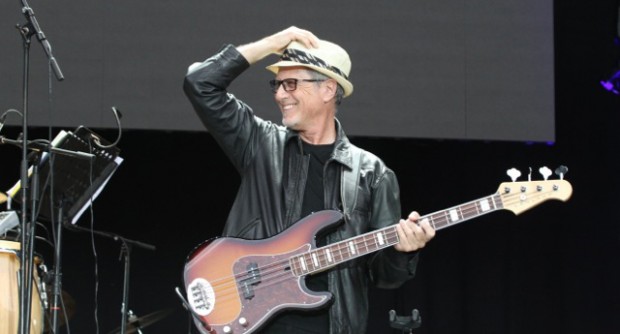
Bob Glaub’s resume reads like a who’s who of pop and rock royalty. He’s done session work and toured with artists including John Lennon, Jackson Browne, Linda Ronstadt, Bruce Springsteen, Bob Dylan, Rod Stewart, Ringo Starr, Donna Summer, Stevie Nicks, Crosby, Stills & Nash (& Young), Warren Zevon, John Fogerty, and Leonard Cohen, to name just a few. But through all of his success, the bassist has remained humble about his work and acts as a servant of the song.
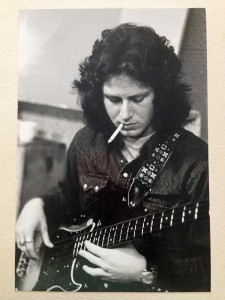 Glaub was born in New York and raised in Los Angeles, where he would eventually become a mainstay of the L.A. studio scene. After landing his first major session in 1972 at just 20 years old, he worked with a handful of artists – playing on John Lennon’s Rock ‘n’ Roll album before hitting the road with Marc Almond (an English band that included long time Charles Mingus drummer, Dannie Richmond). Glaub also toured with Traffic member Dave Mason for a year and a half. He got a lot of playing under his belt with these touring bands and then returned to session work, solidifying his stature in the studio.
Glaub was born in New York and raised in Los Angeles, where he would eventually become a mainstay of the L.A. studio scene. After landing his first major session in 1972 at just 20 years old, he worked with a handful of artists – playing on John Lennon’s Rock ‘n’ Roll album before hitting the road with Marc Almond (an English band that included long time Charles Mingus drummer, Dannie Richmond). Glaub also toured with Traffic member Dave Mason for a year and a half. He got a lot of playing under his belt with these touring bands and then returned to session work, solidifying his stature in the studio.
Earlier this year D. Lakin Basses (owned by Dan Lakin, former founder and owner of Lakland Basses) introduced the Bob Glaub Signature Bass.
Glaub has been staying busy with a wide variety of recording projects plus performing and will be touring with Jackson Browne later this summer/fall and 2015.
Introduction:
“I met Jesse Ed Davis in the most casual way” Glaub explains. “He lived right behind my friends who were renting a house on the beach in Marina Del Rey, California. They set up a little music room in the garage and they’d jam in there. [Jesse] would hear them playing and started to come over. It just so happened that he asked me, soon after we met, to play on his solo album. I was 20. That was my first break into the L.A. studio scene. At that point, Jesse had already played on lots of records including John Lennon and George Harrison solo records.”
“Turns out, on that first recording, he was asking me to replace a bass player who I was a big fan of. I also met Jim Keltner on that record. They (Jesse & Jim) started recommending me for a few things. Then you know how it goes – you play on one thing and then someone recommends you for another from that. Just a handful of people recommending me for gigs snowballed and turned into a bunch of other great gigs. It’s just like any other profession. Kind of like being a good plumber. When something breaks, you ask, “Hey, do you have a good plumber?” Then you hire them and recommend them to three other people, then they recommend them and so on. It just kind of blossomed, but I will say that meeting Jesse Ed Davis and Jim Keltner was very instrumental in getting me off to a running start.”
Though he eventually took to an array of gear (too many basses to list), Glaub started out with a single trusty bass and amp. “On my early sessions I only had one bass,” he said. “They were all done on the same 1964 [Fender] Precision bass with the same set of flatwound strings – La Bella .050 through 110 (I’m still using those strings, haha). I had an early 1970s [Ampeg] B-15s. It had a bigger cabinet than the original B-15n, & 60 watts instead of 30 watts. I was taking it to gigs, too, because I found the 30-watt model to be too small to take to little blues and rock gigs. I also heard that [Motown bassist] James Jamerson had been using one since he moved to L.A., so I figured if Jamerson was using one then that’s the one I’m going to buy! It’s a great amp and I still have it & use it.”
1. “Natural Anthem” – from Jesse Ed Davis’s Keep Me Comin’ (1973)
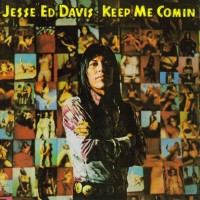 This was the first record I ever played on. I had been in a few studios by then, but this was my first real union recording session. I remember being really nervous because I was a huge fan of drummer Jim Keltner’s. The way it happened, Jesse just called me up and said, “What are you doing right now?”
This was the first record I ever played on. I had been in a few studios by then, but this was my first real union recording session. I remember being really nervous because I was a huge fan of drummer Jim Keltner’s. The way it happened, Jesse just called me up and said, “What are you doing right now?”
I said nothing much, so he said, “Get your bass and come down to Paramount Studios right now. We’re making an album and we need you.” For whatever reason it didn’t work out with the other bassist.
It’s an instrumental and it was recorded live with a five piece horn section. Of all the nights of recording to make the album, I remember this track the most along with the other instrumental, “6:00 Bugalu,” because of the live horn section that included Clifford Scott on tenor sax, who had played on Bill Doggett’s Honky Tonk, Part 1 & 2. The other tracks were just the rhythm section.
That made it really exciting. There were no overdubs, no punching in, no nothing.
Recorded at Paramount Studio A with my 1964 Precision bass & tweed Fender 4 x 10″ Bassman plus a direct box.
2. “You Can’t Catch Me” – from John Lennon’s Rock ‘n’ Roll (1975)
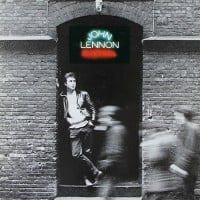 This was only nine years after seeing the Beatles on Ed Sullivan and three years after they broke up, so I had to pinch myself. Jesse Ed Davis played on this, and he recommended me to John & Phil Spector for this session. That track probably has about 26 players playing live. It was Phil Spector attempting to recreate his wall of sound on a couple of tracks for that album. I happened to be lucky enough to be part of it. It was probably my third recording session ever.
This was only nine years after seeing the Beatles on Ed Sullivan and three years after they broke up, so I had to pinch myself. Jesse Ed Davis played on this, and he recommended me to John & Phil Spector for this session. That track probably has about 26 players playing live. It was Phil Spector attempting to recreate his wall of sound on a couple of tracks for that album. I happened to be lucky enough to be part of it. It was probably my third recording session ever.
There were two drummers (Hal Blaine and Jim Keltner), two bass players, three keyboard players, three percussionists, six guitar players and a bunch of horn players. The other bass player on the session, Ray Neapolitan, was a busy studio bass player at the time. He was so great, really open & kind to me. Ray is playing the actual bass part down in the trenches on this track. I hadn’t had too much experience playing with two bass players, so I figured I can’t be doing that, too. What you hear me doing is basically playing kind of a rhythm guitar part up high, almost like a Chuck Berry ‘Memphis’ kind of part. One of the loudest things in the mix is the bass doing [that part]. I don’t think I ever got a chance to do that again; I only did it to kind of stay out of Ray’s way. I just thought he’s playing bass so I’m going to do something else. It wouldn’t sound good for us to both play down low unless it was exactly worked out and it wasn’t that kind of a session. It was just kind of a jam.
John was really cool. He just sat in the middle of the room with the band around him. We’d play a song and all just fall in, pretty much. He didn’t give that much direction, he just sang his ass off. I had just bought a little Pignose amp & brought it with me to the session (along w/my B-15s & 1964 Precision bass).
Phil Spector went nuts for that little Pignose when he saw it and had the engineer mic it up. A little side note… the second (assistant) engineer on that recording was Jimmy Iovine, who just sold his (& Dr. Dre’s) company Beats Electronics to Apple for three billion dollars.
Recorded at A&M Studio A in Hollywood, CA.
3. “I Don’t Want to Talk About It” – from Rod Stewart’s Atlantic Crossing (1975)
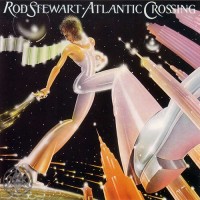 This song was recorded pretty much on the fly this and was one of the first five or so albums I played on. Jesse Ed recommended me for this session as well. Tom Dowd was the producer. It was recorded at Wally Heider’s 4 in Hollywood, on Cahuenga, right next door to a great old Italian restaurant, Martoni’s (both studio & restaurant have been gone for quite awhile now). They gave us the chart and we played it, and that’s just what I played on a very early take. It may’ve been the first time I ever saw a Nashville style (number) chart. The great Muscle Shoals Rhythm Section keyboard player, Barry Beckett played and wrote the charts. Steve Cropper was also on the session. It was just “ready, set, go, play” after listening to Rod sing it. His singing inspired you to play a certain way, and that’s what you hear. Again, this was one of my first sessions. I was pretty young and just going for it, using a lot of double stops (10ths). It’s such a beautiful song.
This song was recorded pretty much on the fly this and was one of the first five or so albums I played on. Jesse Ed recommended me for this session as well. Tom Dowd was the producer. It was recorded at Wally Heider’s 4 in Hollywood, on Cahuenga, right next door to a great old Italian restaurant, Martoni’s (both studio & restaurant have been gone for quite awhile now). They gave us the chart and we played it, and that’s just what I played on a very early take. It may’ve been the first time I ever saw a Nashville style (number) chart. The great Muscle Shoals Rhythm Section keyboard player, Barry Beckett played and wrote the charts. Steve Cropper was also on the session. It was just “ready, set, go, play” after listening to Rod sing it. His singing inspired you to play a certain way, and that’s what you hear. Again, this was one of my first sessions. I was pretty young and just going for it, using a lot of double stops (10ths). It’s such a beautiful song.
Recorded with 1964 Precision bass and B-15s/direct box.
4. “The Pretender” – from Jackson Browne’s The Pretender (1976)
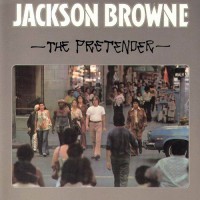 Jackson has written so many great songs, but this is one of my favorites. It’s another thing that wasn’t arranged, I just came up with the bass line after hearing Jackson sing us the song . There’s a distinctive line on the verses and then it goes into a simple bass part. We had known each other for about three years, but it may be one of the first records I played on with the great drummer, Jeff Porcaro.
Jackson has written so many great songs, but this is one of my favorites. It’s another thing that wasn’t arranged, I just came up with the bass line after hearing Jackson sing us the song . There’s a distinctive line on the verses and then it goes into a simple bass part. We had known each other for about three years, but it may be one of the first records I played on with the great drummer, Jeff Porcaro.
I have a funny ongoing thing with my buddy Jackson about that song. The album was very successful and I was proud to have played on it. I only played on a couple songs on the album. When I got the LP, I was reading all the credits, and for “The Pretender” [it listed] on bass, Lee Sklar, who is my pal, and I’m a huge fan of. I saw Jackson a few months later and said, “What’s up with that?” So they fixed it on the second million copies, but for the first million copies it didn’t have the credit right. Just to put an exclamation point on the story; cut to about six years ago when one of Jackson’s greatest hits packages came out. I was at his recording studio and he gave me a CD package of it. So I took the little booklet out of the CD set and thumbed through it, checking out the artwork and whatever. My eyes just gravitated towards “The Pretender” and thirty years later they had gotten it wrong again! [laughs]
Recorded at Sunset Sound Studio 2, Hollywood, CA with the 1964 Precision bass and B-15s/direct box.
5. “Last Dance” – by Donna Summer from the Thank God It’s Friday Soundtrack (1978)
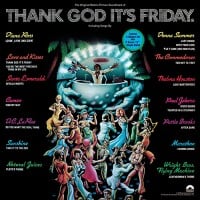 This was a big hit that came out on a movie soundtrack called “Thank God it’s Friday.” It’s a movie that not too many people saw and they were no musician credits on the album. Bob Esty wrote the arrangement, and the bass line was written out note for note. I remember it being a 3-music stand chart, because it was a really long song; not the edited hit version, but the album version. Ed Greene, (a groove machine, great drummer), played drums on it. Arranger Bob Esty conducted the intro, so we just followed him. Then once the time started, we played to a click track.
This was a big hit that came out on a movie soundtrack called “Thank God it’s Friday.” It’s a movie that not too many people saw and they were no musician credits on the album. Bob Esty wrote the arrangement, and the bass line was written out note for note. I remember it being a 3-music stand chart, because it was a really long song; not the edited hit version, but the album version. Ed Greene, (a groove machine, great drummer), played drums on it. Arranger Bob Esty conducted the intro, so we just followed him. Then once the time started, we played to a click track.
I never met Donna during the recording. She was never at any of the recording sessions I did for her; I also played on the Bad Girls album. She’d come in and sing everything after the tracks were done.
I just met her in a parking lot at the recording studio. I was getting into my car and she was getting out of her car, so I introduced myself and told her I played bass on her records. She said, “Oh, really?” [laughs] That was about it, an awkward encounter, but she was very sweet.
Recorded at The Record Plant, Los Angeles, CA with the 1964 Precision bass and B-15s/direct box.
6. “Back to Blue Some More” – from Valerie Carter’s Just a Stone’s Throw Away (1977)
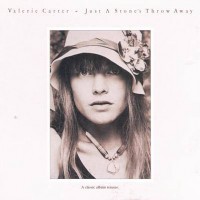 This is another track where I played some double stops (Chuck Rainey was a huge influence) and it’s real simple bass playing, but I love the song so much. The great Jeff Porcaro played drums on it, he was one of my all-time favorite drummers to play with. Once again, it’s the same bass, same amp. There wasn’t too much laboring over arrangement. It was just like, “Here’s the song, let’s play it.” That’s what it is, and I like the charm of that. It has a little cinematic kind of appeal to it.
This is another track where I played some double stops (Chuck Rainey was a huge influence) and it’s real simple bass playing, but I love the song so much. The great Jeff Porcaro played drums on it, he was one of my all-time favorite drummers to play with. Once again, it’s the same bass, same amp. There wasn’t too much laboring over arrangement. It was just like, “Here’s the song, let’s play it.” That’s what it is, and I like the charm of that. It has a little cinematic kind of appeal to it.
Recorded at Hollywood Sound Recorders, Hollywood, CA with the 1964 Precision bass and B-15s/direct box.
7. “Ain’t No Way” – from David Lindley’s El Rayo-X (1981)
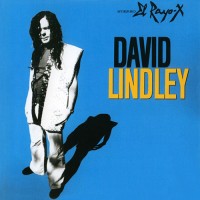 This whole album has a cool rock reggae feel to it. The drummer on it was my friend, the great Ian Wallace. The thing I like about this track is the way that my bass interacts with the organ. It wasn’t something we really spoke [about], and not a note of it was written out. The organ player, William “Smitty” Smith, was playing a Hammond B3. I just love the way he decided to play the “one” on the bass pedals on every downbeat. He played that big “one” feel, kind of how Bootsy Collins talks about the “one” as James Brown taught him. That song really has a great “one” feel, thanks to “Smitty” laying it down on all those downbeats.
This whole album has a cool rock reggae feel to it. The drummer on it was my friend, the great Ian Wallace. The thing I like about this track is the way that my bass interacts with the organ. It wasn’t something we really spoke [about], and not a note of it was written out. The organ player, William “Smitty” Smith, was playing a Hammond B3. I just love the way he decided to play the “one” on the bass pedals on every downbeat. He played that big “one” feel, kind of how Bootsy Collins talks about the “one” as James Brown taught him. That song really has a great “one” feel, thanks to “Smitty” laying it down on all those downbeats.
I’m not sure which bass that is. At that time I was starting to buy a few instruments. It could be my 1959 P-bass. I actually took the strings off my 1964 Precision bass and put them on that 1959. It’s got a swamp ash body with a see-through Mary Kay white finish, a gold anodized pickguard, and a rosewood fingerboard.
I either played that on that track or a 1959 Gibson EB-2 hollow-body. I don’t remember which.
Recorded at Record One Studio 1, Sherman Oaks, CA with a B-15s/direct box.
8. “Edge of Seventeen” – from Stevie Nicks’s Bella Donna (1981)
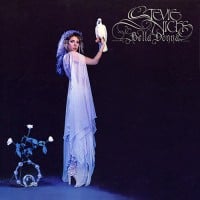 That’s played on my white 1959 P-bass, but I had taken the flatwounds off for awhile and put on a La Bella half-round set. In my short tenure of playing with Stevie, I played on this album and another then toured a little with her. It was her first solo album out of Fleetwood Mac.
That’s played on my white 1959 P-bass, but I had taken the flatwounds off for awhile and put on a La Bella half-round set. In my short tenure of playing with Stevie, I played on this album and another then toured a little with her. It was her first solo album out of Fleetwood Mac.
Stevie had played the song for us on the piano, and the way it laid on the piano is nothing like how it turned out. I doubled Waddy Wachtel’s 16th note guitar intro and chorus lines with a pick. As I recall, it’s one of the only times that I played a track where I kept a pick in the palm of my hand and played the verses with my fingers, then grabbed the pick real fast to go into those 16th notes.
The thing I remember about that session is that Jimmy Iovine produced it, but they brought in Bruce Springsteen’s co-producer Chuck Plotkin for that night. We were running through the tune and just kind of playing a one & three feel on the kick drum & bass (w/smooth as silk Russ Kunkel on drums) for the verses. To make a point in the control room, Chuck took off his shoe and started beating with it on the console in an upbeat pattern. So Russ started playing this 16th note hi-hat pattern on the chorus with the upbeat kick pattern on the verses. That’s what I based the verse bass part off of.
Recorded at Studio 55, Hollywood, CA with a 1959 Precision bass and B-15s/direct box.
9. “Golden Blunders” – from Ringo Starr’s Time Takes Time (1992)
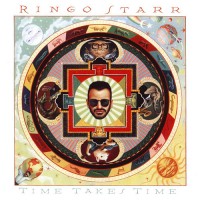 I only played on a few tracks on this album. I can’t tell you how cool it was to sit in the studio and look across the room – not very far across the room, at that – and there’s Ringo playing that distinct back and forth stroke with his right hand on the hi-hat. I remember looking across to Waddy Wachtel, and we were just cracking up at how great it was to be playing with Ringo. He’s such a great drummer and such a wonderful person.
I only played on a few tracks on this album. I can’t tell you how cool it was to sit in the studio and look across the room – not very far across the room, at that – and there’s Ringo playing that distinct back and forth stroke with his right hand on the hi-hat. I remember looking across to Waddy Wachtel, and we were just cracking up at how great it was to be playing with Ringo. He’s such a great drummer and such a wonderful person.
It was totally easy and natural to play with him. He’s such a gracious person and so easy to play with. He just lays it down with that Ringo beat and feel. Nothing was written out, but I think maybe we heard a demo of the song by the writer. Early on in session work you never heard demos, you just heard somebody play a song on piano or guitar and you just cut it.
The bass on that record was the same 1964 P-bass I used on my early records, but something came over me in 1986 to yet [expletive] up another vintage P-bass. I had it finished a salmon color. It looks kind of like what Fiesta Red would fade to. The color I picked was off a Chrysler paint chip from the 1950s. I kept the tortoise pickguard but I added a Jazz Bass pickup on the back. It was an idiotic move really, but the bass served me well. It was my main bass for the next fifteen years or so.
I saw Ringo at his show in Australia during a day off while on tour with Carole King last year. I got to chat with him before the show, and we were talking about the session. He said, “Oh, I remember that. That was the first time anyone had put my drums up on the grid,” meaning that he was recorded in Pro Tools. He sounded like he wasn’t too fond of it.
Recorded at Conway Studio Hollywood, CA with a 1964 Precision bass and direct box.
10. “Hard Way” – from Taj Mahal’s Dancing the Blues (1993)
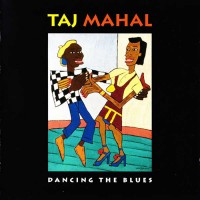 I used to go see Taj when I was in high school. I’ve always been a fan and I still love him. This was the only time I recorded with Taj and I’m happy we’ve become friends over the years. Whenever I run into him he says, “Bob Glaub, doing his job!” [laughs] He coined that phrase when I did that record.
I used to go see Taj when I was in high school. I’ve always been a fan and I still love him. This was the only time I recorded with Taj and I’m happy we’ve become friends over the years. Whenever I run into him he says, “Bob Glaub, doing his job!” [laughs] He coined that phrase when I did that record.
I played on most of the record and most of the tracks are with drummer Tony Braunagel, but Richie Hayward from Little Feat played drums on this one.
It was one of those things where they (Taj & his producer, John Porter) said we’re playing “Hard Way,” here’s how it goes, and it goes to a shuffle in the middle. We cut it with a live horn section (The Texicali Horns). It’s one of those things that just happened right away in the studio. It was maybe one take, maybe two and then done.
Recorded at Studio 55, Hollywood, CA with a Washburn AB-40 acoustic/electric bass and B-15s/direct box.
11. “Viva Las Vegas” – from Bruce Springsteen’s Tracks Box Set (1998)
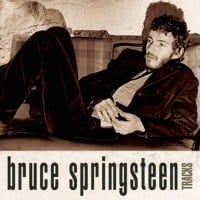 This track is on a 4-CD box set. Gary Tallent is an old friend, I love his playing and I think he puts the “roll” in the rock & roll in [The E Street Band]. At the time, Bruce wasn’t playing with a lot of other musicians outside of his band, so I was thrilled to get the call. This was done for a charity album that came out in England and later he put it on this box set of his. I’ve always loved the song and the Elvis Presley version, and Bruce’s version is really cool. It was cut with a four-piece band: my buddy Jeff Porcaro on drums, Roy Bittan on piano, Bruce playing guitar (and me).
This track is on a 4-CD box set. Gary Tallent is an old friend, I love his playing and I think he puts the “roll” in the rock & roll in [The E Street Band]. At the time, Bruce wasn’t playing with a lot of other musicians outside of his band, so I was thrilled to get the call. This was done for a charity album that came out in England and later he put it on this box set of his. I’ve always loved the song and the Elvis Presley version, and Bruce’s version is really cool. It was cut with a four-piece band: my buddy Jeff Porcaro on drums, Roy Bittan on piano, Bruce playing guitar (and me).
Recorded at One on One Studio, North Hollywood, CA with a 1961 Precision bass and B-15s/direct box.
12. “T.V. Mama” – from L.A. Blues Alliance’s What a Life (2007)
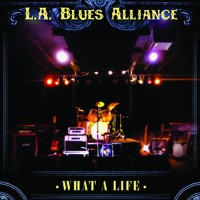 The L.A. Blues Alliance was basically a studio project done over the course of one week that TV composer Mike Post put together around a band consisting of John (JR) Robinson on drums, myself, Sonny Landreth, Snuffy Walden & Keb’ Mo’ on guitars and vocals, Stanley Behrens on harmonica & vocals, Mike Finnigan, keyboards & vocals, Amy Keys on vocals, and David Morgan on piano and vocals. I just love the way the bass plays off the Hammond B3. I kind of played as if Mike Finnigan was playing left-hand or pedals on the B-3. We did one-take and it came out great.
The L.A. Blues Alliance was basically a studio project done over the course of one week that TV composer Mike Post put together around a band consisting of John (JR) Robinson on drums, myself, Sonny Landreth, Snuffy Walden & Keb’ Mo’ on guitars and vocals, Stanley Behrens on harmonica & vocals, Mike Finnigan, keyboards & vocals, Amy Keys on vocals, and David Morgan on piano and vocals. I just love the way the bass plays off the Hammond B3. I kind of played as if Mike Finnigan was playing left-hand or pedals on the B-3. We did one-take and it came out great.
Recorded at Studio 9, Burbank, CA with a 1950’s Kay K-162 hollowbody bass with a direct box.
13. “Snake Road” – from Ron Sexsmith’s Forever Endeavour (2013)
 One of my favorite producers, Mitchell Froom produced this album. I love working with him & his engineer David Boucher. This was something where Mitchell wrote out a good deal of the bass part. He rarely writes out parts, but when he does he’ll say “do your thing with it.” What he wrote for the choruses was written on the keyboard and didn’t quite lay on the bass right for me [so I modified it]. I like the way the bass interacts with the melody and the horns, percussion (Don Heffington) and everything going on throughout the song. I overdubbed the bass part.
One of my favorite producers, Mitchell Froom produced this album. I love working with him & his engineer David Boucher. This was something where Mitchell wrote out a good deal of the bass part. He rarely writes out parts, but when he does he’ll say “do your thing with it.” What he wrote for the choruses was written on the keyboard and didn’t quite lay on the bass right for me [so I modified it]. I like the way the bass interacts with the melody and the horns, percussion (Don Heffington) and everything going on throughout the song. I overdubbed the bass part.
Recorded at Froom & Board Studio, Los Angeles, CA with a 1959 Precision bass and direct box.
Editor’s Note: A previous version of this article listed “Quite Ugly One Morning” – from Warren Zevon’s Mr. Bad Example (1991). It has since been noted that Mr. Glaub played on the original tracking session, but was overdubbed by bassist Jorge Calderon, who is credited with the final bass line.
How about you? What’s your favorite tune backed by Bob Glaub? Share your favorites in the comments.

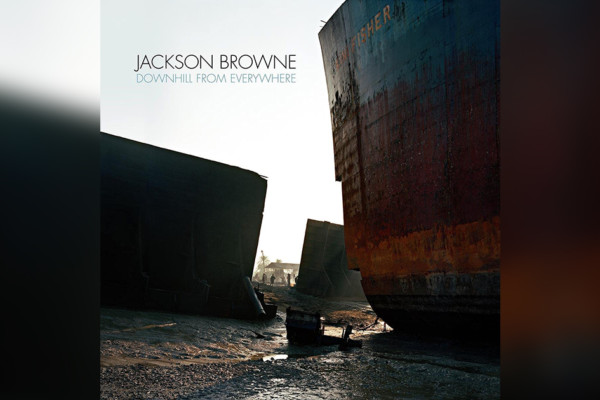
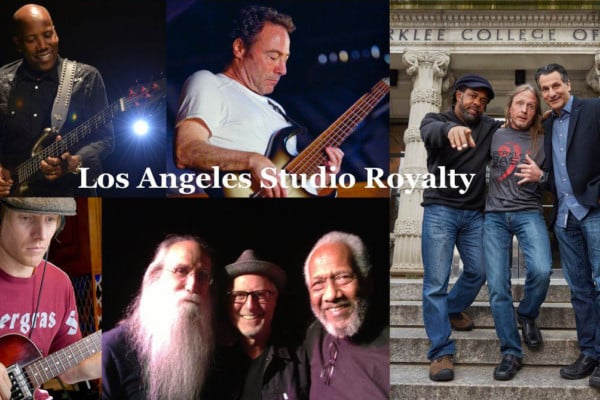
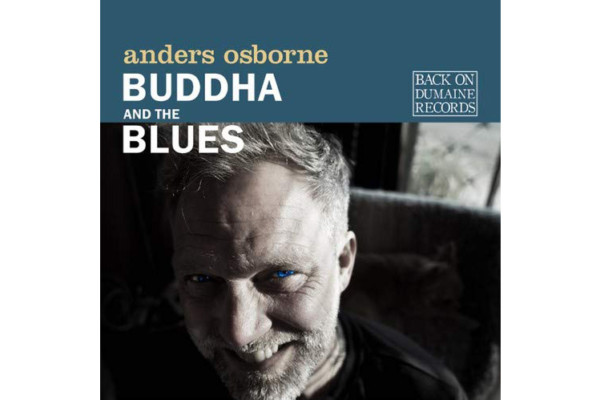
Wow , Where do you start with Bob Glaub… A class act in the recording and live playing avenues.
So many classic bass lines to acknowledge in a career that is still in perfect motion.The work Bob did on Ashgroove with Dave Alvin ,and a few other SOCAL musician friends is some great basswork .Great to see No Treble share Bob’s talents .
Thanks for this feature. Just this evening I was listening to Steve Perry’s first solo album (“Street Talk”) and for some reason all of the bass lines were jumping out at me. I’ve loved this album ever since it came out and always assumed that the bass player was Randy Jackson since he was involved in Journey later in the 1980s. But tonight I picked up my CD and read the liner notes. Randy Jackson on bass? Nope. Bob Glaub on every song except one. Mr. Glaub’s ultra-tasty bass work on the ballad “Foolish Heart” is a study in taste, restraint, and the “playing to the song.”
Totally agree. The bass on “Street Talk” is absolutely stellar.
Have dropped these into a Spotify Playlist – if anyone’s interested it’s over at http://goo.gl/Hb4EDu. (I couldn’t find the Ringo Starr or L.A. Blues Alliance tracks on there, but 11/13 is better than Meatloaf.)
I’ve seen Bob play live and heard a lot of his studio recordings. I really liked seeing him live when he played with John Fogerty and with Kenny Aronoff on drums but everything he has done is excellent with all the artists he has worked with over the years and decades.
I have always loved his playing on “Nighttime in the Switching Yard”- Warren Zevon, funky, clean and precise with a great sound.